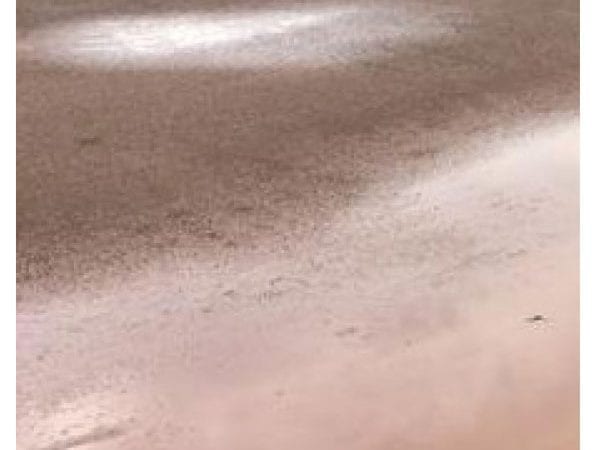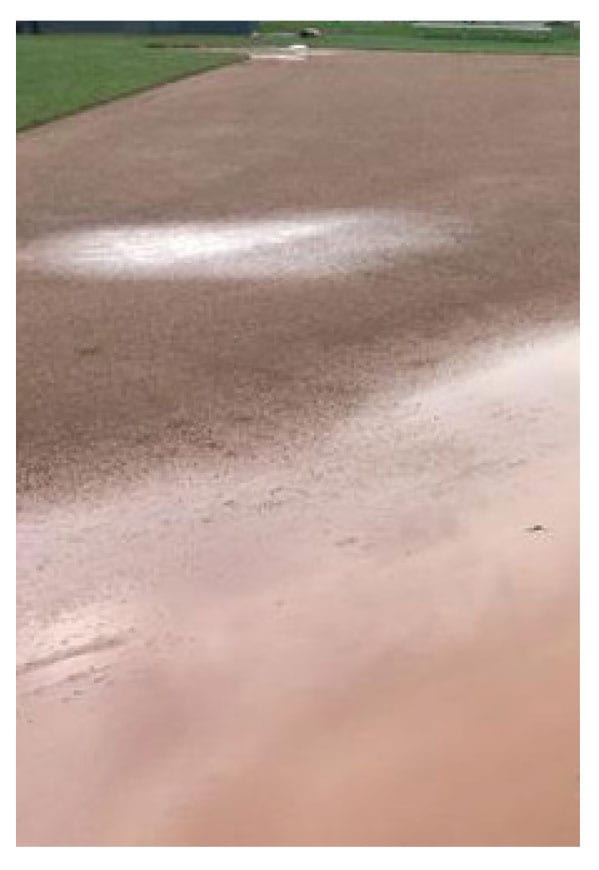Preparing An Infield After A Rain Event

 |
I get this question many times, “How do I prepare my infield after a rain event?” The first step is to have a balanced infield mix profile that is laser graded. Also, the correct depth of conditioner is important to take rain events effectively. With that said, let me take you through the simple steps of getting an infield ready to play after a rain event.
Balanced Infield Mix Profile
So, what makes a good mix? A good mix has many characteristics, but the most important ones include : traction, playability, and consistency. A mix should provide consistent traction, which is the ability for athletes to play the game without sliding/slipping around the infield. The infield should play consistently in a variety of weather conditions.
Infield mixes have three components, sand, silt, and clay. Sand, the largest soil particle, provides the structural integrity of the infield. The targeted range is 58-75% and over 50% of the sand should be retained on the medium sieve. Silt, the second largest soil particle, acts as a bridge between the sand and the clay. 10-35% is the acceptable range. Clay, the smallest soil particle, provides the color of the mix and retains moisture. 15- 35% is the acceptable range. The take home message on silt/clay is that the ratio of silt/clay (SCR – more on that later) should NEVER be higher than 1:1.
Depth of Infield Conditioners
How deep should the conditioner be on a given field? The answer depends on the level of play as well as the base soil. For an infield that has a mix with a high silt to clay ratio (SCR – 2.5), approximately 1/4 inch of conditioner is the recommended depth for the surface. An infield with an engineered soil and a balanced silt to clay ratio (SCR – 1.0), should require a lesser amount of conditioner to be used. Approximately 1/8 inch of conditioner is the recommended depth for the surface.
There are a few instances when a greater depth of conditioner should be considered:
- Infield mixes with a high SCR
- Difficulty in keeping moisture in an infield (recreational play)
- Infield mixes with a great amount of fine and very fine sand
- Infield mixes that tend to become too firm in dry weather
The goal is to create a top 1/4 inch that is managed to allow for cleat-in and cleat-out play.
Preparing an Infield After a Rain Event Case Study: P&G Reds Urban Youth Academy
First, nail drag the infield to a depth of 1/4 inch using the VibraFlex on the ABI Force.
Note: The goal is to break the surface tension and allow the conditioner to work. DO NOT rip the infield up at depths exceeding 1/2 inch. Using the simple “key test” is a great way for staff and volunteers to monitor depth of nail dragging.
Within 30 minutes the infield is starting to dry and the conditioner is ready for a finish drag.
The infield, after a finish mat drag, is ready for play within an hour of beginning the process with little to no disruption to the infield surface. Not one bag of calcined clay or a drying agent was used to get this field ready to play.
The bottom line: If the right materials are installed and managed correctly, infields can take rain events and be ready for play without the need for a tremendous amount of drying agents.
|
|
|
|
|
| Infield prior to nail dragging | First couple passes | “Key Test” | Infield after a finished mat drag |
For more information visit j-dturf.com and read the Smart Turf Blog.
Play on!
Jamie Mehringer
President, J&D Turf







